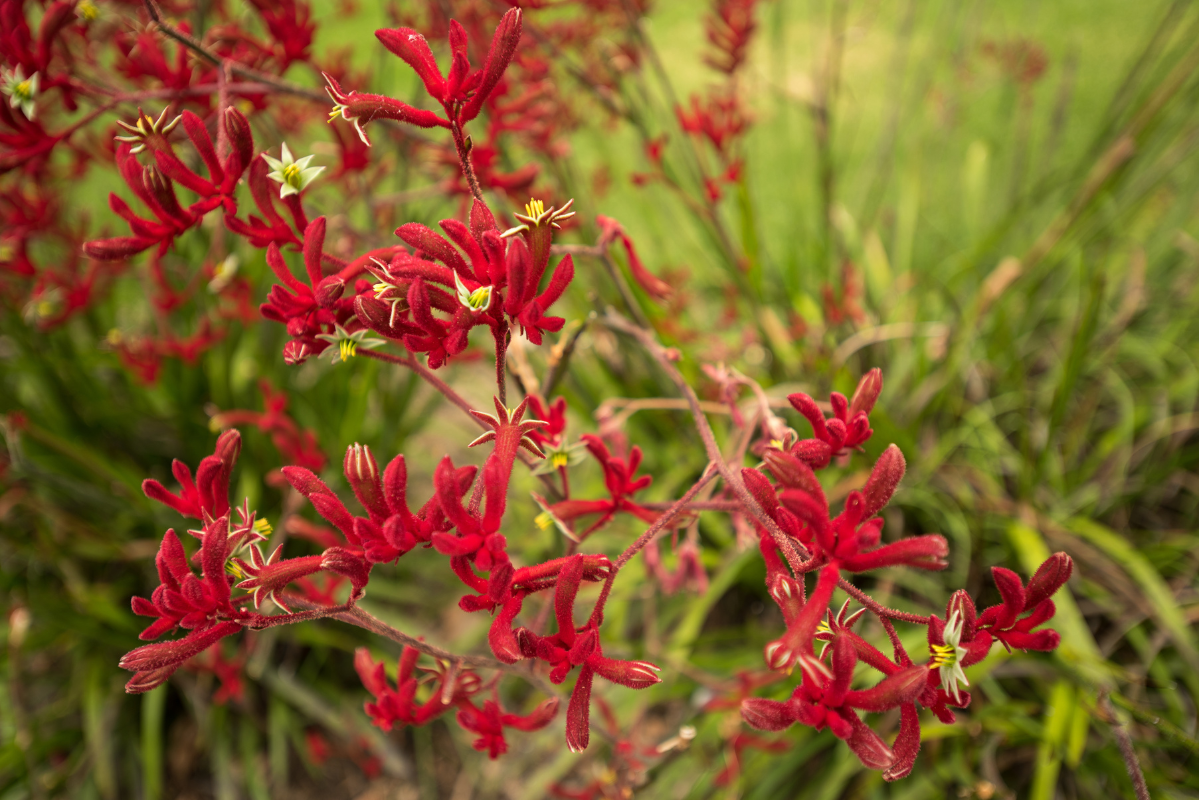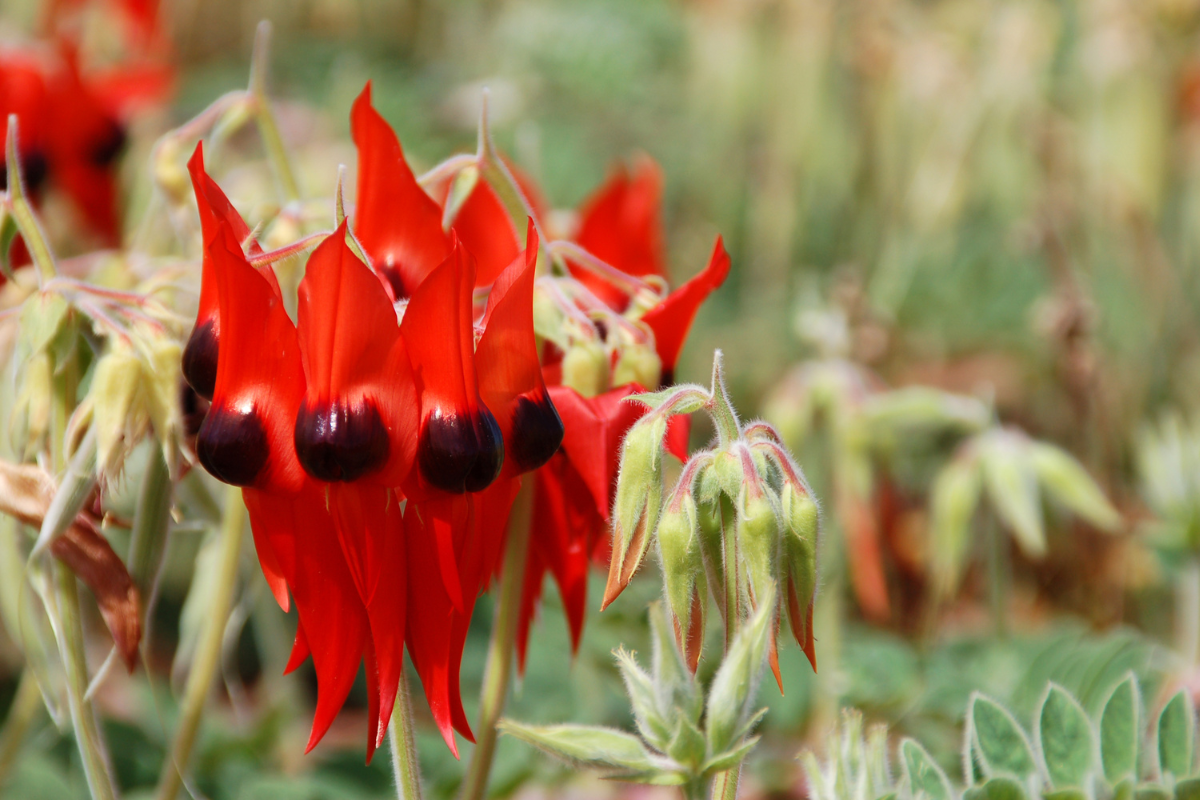
Everlastings are a popular WA wildflower. Image: Australia's Golden Outback
Did you know Western Australia is home to the largest collection of wildflowers in the world? There are approximately 12,000 native species of wildflowers that blossom during wildflower season, making a visit to WA to spot wildflowers a must do between June and November.
With the diverse landscapes across Western Australia, it’s not hard to see how there is such a varied collection of flora and fauna across the state. From national parks to forests, rugged cliffs to coastal plains, there’s a whole eco-system of wildflowers waiting to be found.
Start the wildflower hunt in June, where the Sturt’s Desert Pea and Everlastings start peeping out in the Pilbara, and end it in the South West where the tiniest orchids make themselves known in October and November.
June: The Pilbara leads the charge of wildflower season with locations like Tom Price, Karijini National Park, Newman and Port Hedland.
July: The Midwest begins it’s blossoming. Leseur National Park in Jurien Bay and Kalbarri starts seeing orchids, acacias and everlastings.
August: Head to Mullewa near Geraldton to see the wreath flower, Wave Rock (Hyden), Avon Valley.
September: Perth City starts to bloom with King’s Park a definite must-visit, Perth Hills, Swan Valley.
October: The Stirling Ranges, Porongurup National Park and Torndirrup National Park in Albany
November: The wildflower season ends in Margaret River where orchids of every description can be found.
When you see carpets of blossoms in WA, they’re probably everlastings! These everlasting daisies are a native wildflower known for their papery flowers that come in stunning colours like pink, white, and yellow.
Where to find Everlastings: The Coral Coast, Wheatbelt, and outback regions
When to find Everlastings: July to October
 Kangaroo Paw
Kangaroo Paw
Unique paw-shaped flowers in brilliant reds and greens, the Kangaroo Paw is one of WA’s most recognisable symbols.
Where to find Kangaroo Paws: Found across the South West, Perth Hills, and coastal plains
When to find Kangaroo Paws: August to November

Wreath Flowers are one of the more unique native wildflowers in WA!
You don’t get more iconic than the Wreath Flower! This low growing plant forms perfect circular “wreaths” of pink, cream, and red flowers growing right out of the gravel, a unique plant and one to put on a WA bucket-list.
Where to find Wreath Flowers: Found near Pindar, Mullewa, and Morawa in the Mid West
When to find Wreath Flowers: Late August to October
An Australian icon, the Banksia’s bold, cone-shaped flowers are beloved by birds and photographers alike for their unique and intricate forms.
Where to find Banksias: South West and coastal regions
When: Year-round (depending on species)
 Wildflower enthusiasts are always on the hunt for the vibrant Queen of Sheba Orchid.
Wildflower enthusiasts are always on the hunt for the vibrant Queen of Sheba Orchid.
There are hundreds of different orchids to be found in Western Australia. From the tiny donkey orchids to the vibrant colours of the Queen of Sheba, spying a native orchid in the world is well-worth the challenge.
Where to find Orchids: Found throughout WA, especially in woodlands and national parks like Kalbarri, Lesueur, and Fitzgerald River
When to find Orchids: August to October
Known for its delicate waxy petals and sweet scent, the Geraldton Wax is a WA native turned global favourite in floral arrangements. You can even eat the flowers, some boasting notes of bubblegum!
Where to find Geraldton Wax: Geraldton to Perth region
When to find Geraldton Wax: July to November
 Hakea's have one of the most unique blossoms!
Hakea's have one of the most unique blossoms!
Beloved by Australians, the Hakea has distinctive red-and-pink spherical flowers that resemble nature’s fireworks!
Where to find Hakeas: South Coast and Great Southern regions
When to find Hakeas: April to August
 Sturt's Desert Pea and it's stunning red petals.
Sturt's Desert Pea and it's stunning red petals.
One of Australia’s most dramatic wildflowers, it has striking red and black flowers that pop against the desert sand.
Where to find Sturt’s Desert Pea: Arid and semi-arid regions, especially the Pilbara and inland Mid-West
When to find Sturt’s Desert Pea: July to October
Endemic to Western Australia, the Blue leschenaultia is a beautiful flower with vivid sky-blue petals that stand out among the yellows and pinks of other species.
Where to find Blue Leschenaultia: Found throughout the Wheatbelt and Darling Range
When to find Blue Leschenualtia: August to November
One of the more unique plants, the Pink Fountain Triggerplant’s delicate pink sprays that “trigger” when touched harmlessly covering nearby insects in pollen. Definitely one of WA’s many clever and curious native wildflowers.
Where to find Pink Fountain Triggerplants: South West and Perth Hills
When to find Pink Fountain Triggerplants: September to December
 The delicate Flame Pea flowers are one of the first to appear during wildflower season.
The delicate Flame Pea flowers are one of the first to appear during wildflower season.
A delicate shrub flower with heart-shaped leaves and bright orange-red pea flowers that light up the bush in spring.
Where to find Flame Peas: South West forests and coastal regions
When to find Flame Peas: August to November
Found in the South West of WA, the Swan River Myrtle boasts beautiful pink clusters of small, fragrant flowers and is much-loved WA native.
Where to find Swan River Myrtle: South West coastal and forest regions
When to find Swan River Myrtle: July to October
Grevilleas are loved by birds and gardeners alike with it’s showy blooms in reds, oranges, and yellows.
Where to find Grevilleas: Across WA, especially the Mid West and South West
When to find Grevilleas: Year-round (species-dependent)
With it’s large purple flowers with deep veins, the Lilac Hisbicus is WA’s answer to the tropical hibiscus.
Where to find Lilac Hibiscus: Coastal regions from Kalbarri to Esperance
When to find Lilac HIbiscus: August to January
 These unique feathery flowers are a sight to behold. Image: King's Park
These unique feathery flowers are a sight to behold. Image: King's Park
Soft, feathery flowers in every colour imaginable, these delicate blooms add texture and colour to any wildflower display.
Where to find Featherflwoers: South West and Wheatbelt
When to find Featherflowers: September to December